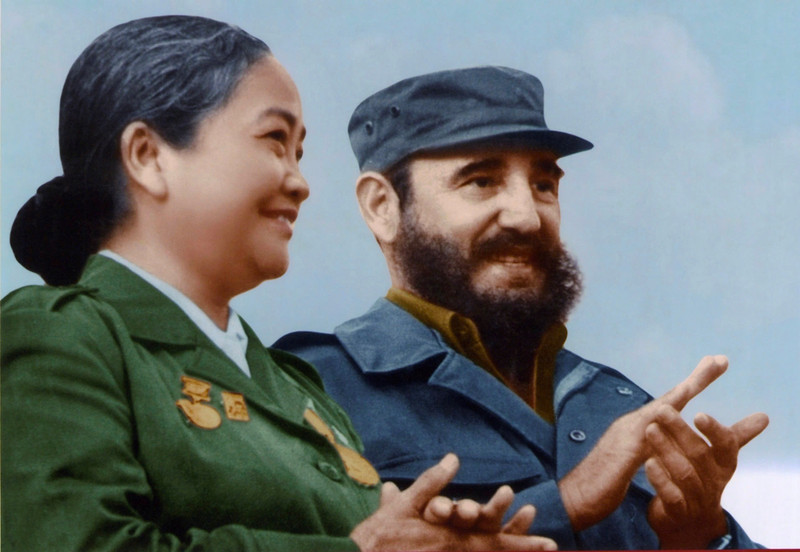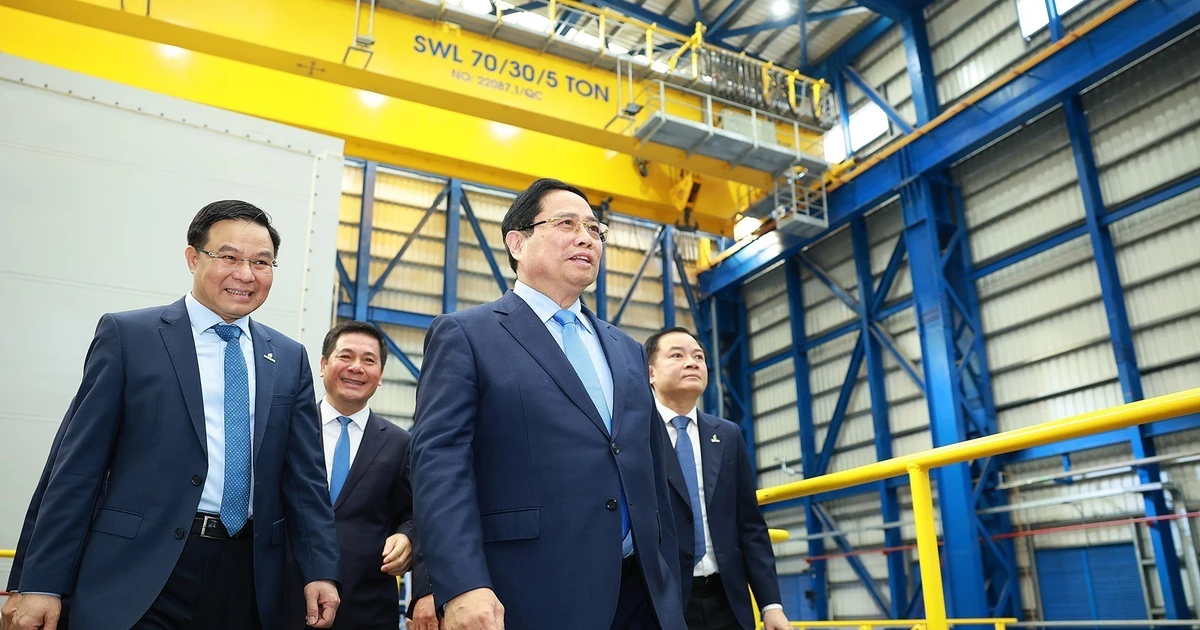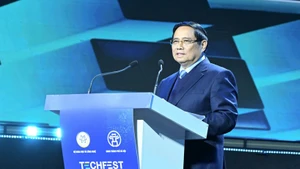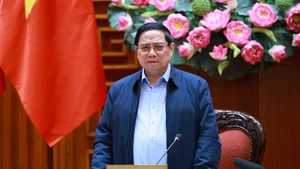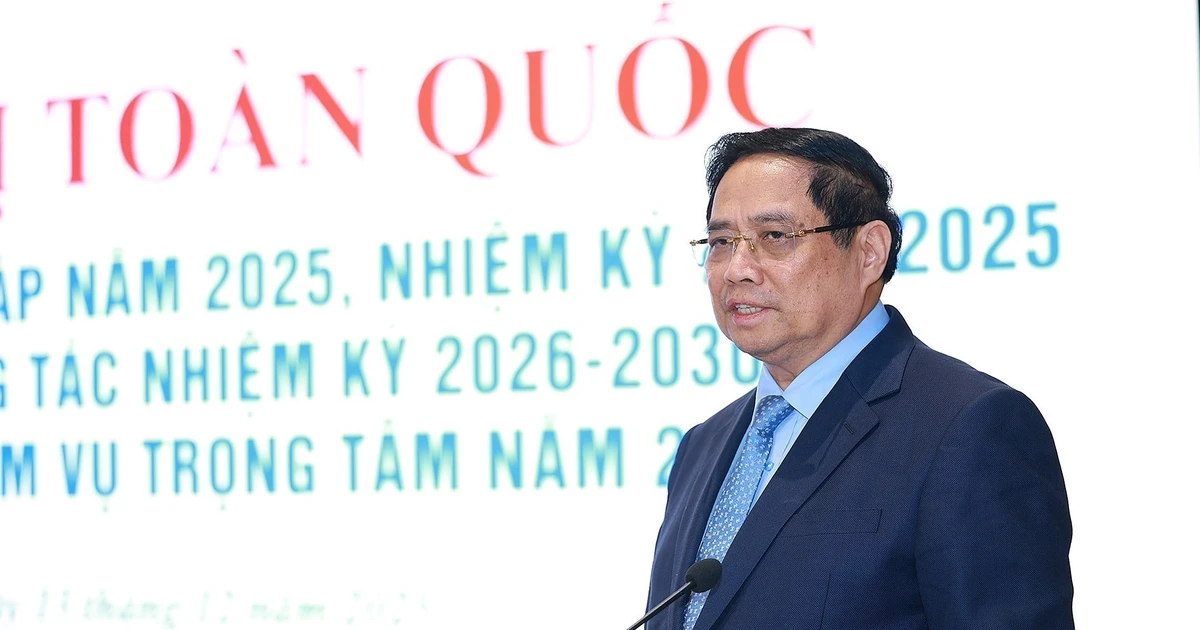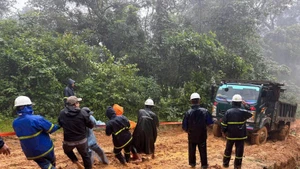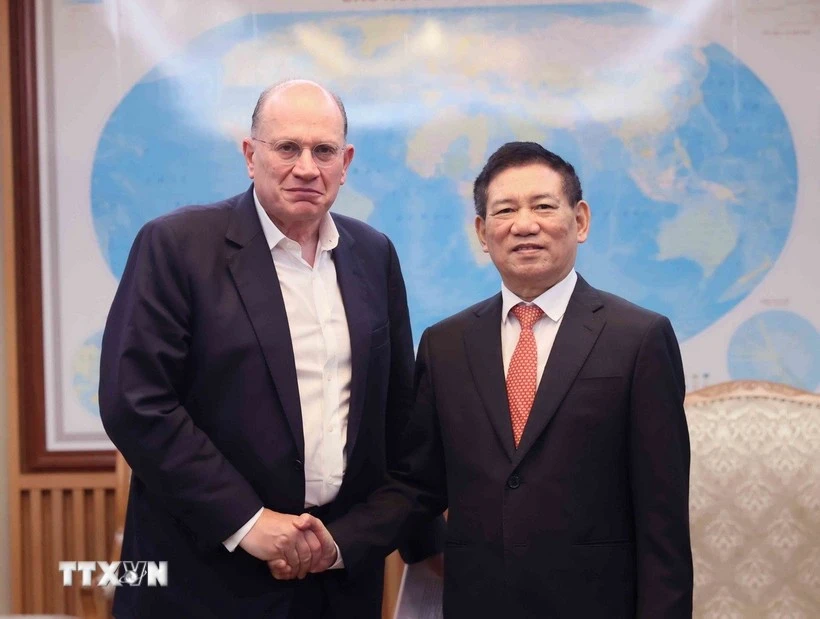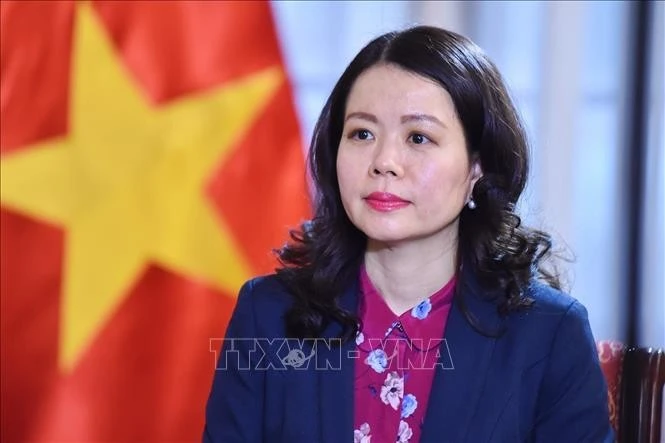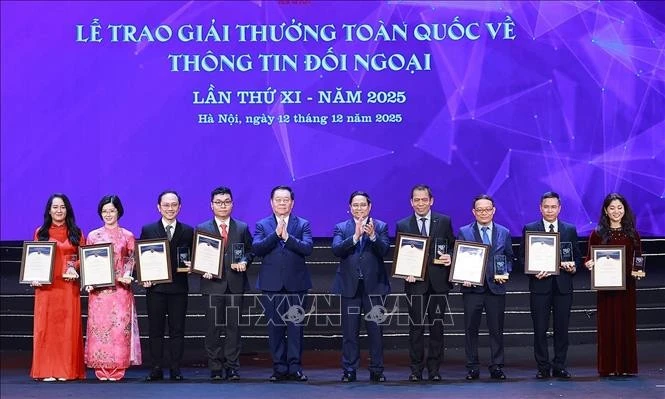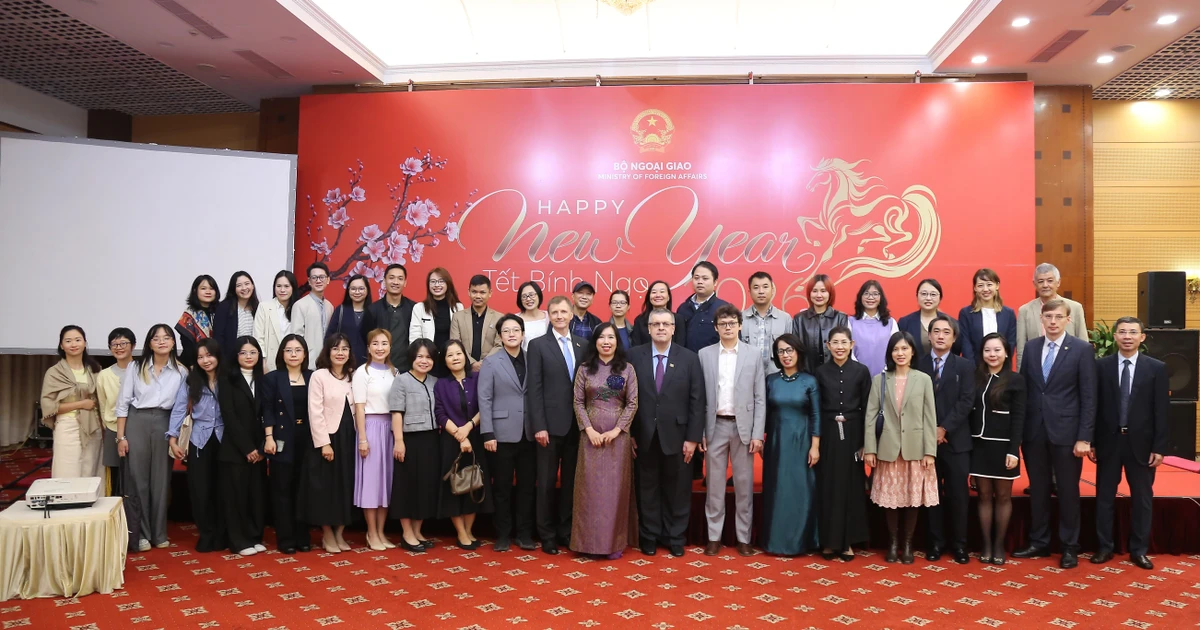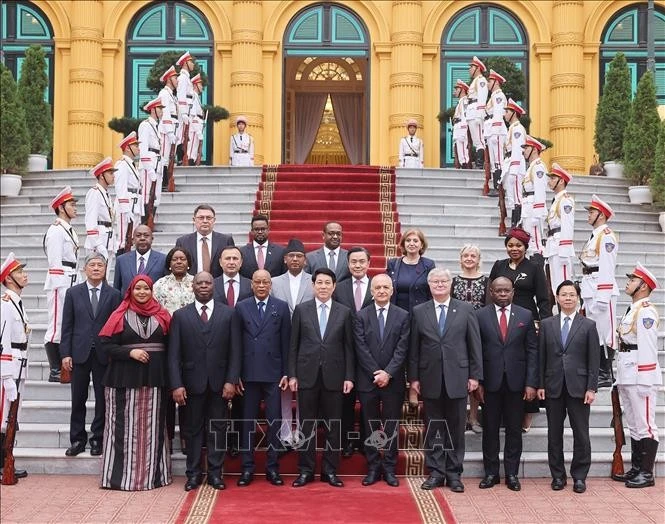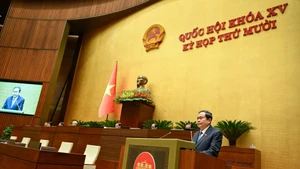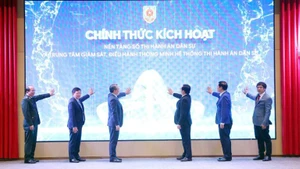Cuba’s late leader, Fidel Castro, once called her "the most extraordinary woman in Vietnam" because she embodied the courage of a general, the heart of a mother, and the vision of a cultural figure. Her life and legacy remain a shining example for generations of Vietnamese women.
A brilliant and courageous commander and beloved general
During the struggle for power in 1945, Nguyen Thi Dinh led thousands of people in Ben Tre Town to seize power. In March 1946, she was honoured to join a delegation of southern cadres who sailed north to report to the Party Central Committee and President Ho Chi Minh on the southern battlefield’s situation. In October 1946, she was assigned the task of transporting 12 tonnes of weapons from the south-central coast to support the southern front.
Despite the immense danger and difficulty, Nguyen Thi Dinh accepted the mission with resolute determination, fully committed to delivering the weapons to the South safely. These weapons were not only valuable assets but also carried the hope and heartfelt support of the North for the southern front.
To avoid detection, she and her comrades covered the weapons with goods as camouflage and waited for northeast winds to sail. None of the four main crew members, including Nguyen Thi Dinh, had seafaring experience, so she hired four skilled fishermen sympathetic to the resistance.
After waiting a month, strong northeast winds finally arrived in November 1946. Amid stormy weather and poor visibility, the boat set sail. A storm struck en route, which helped them avoid enemy detection, and the boat safely reached its destination. This successful mission provided invaluable maritime experience for future revolutionary operations.
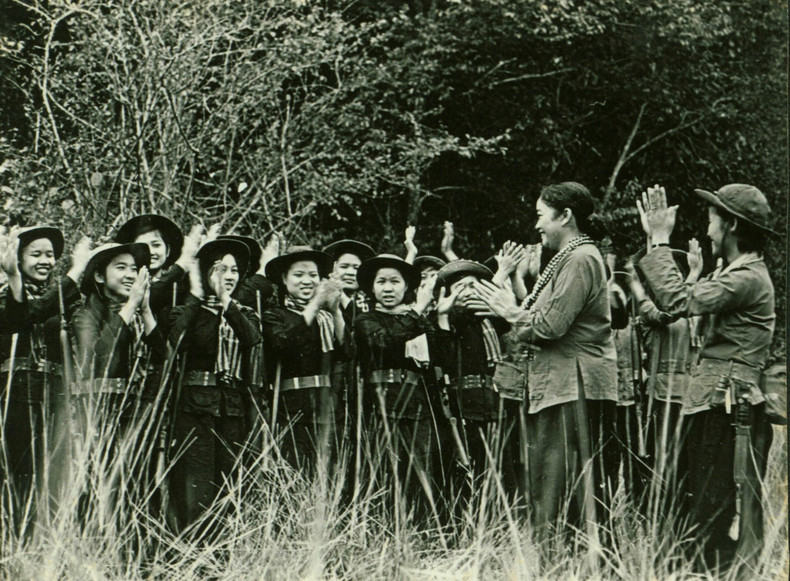 |
| Nguyen Thi Dinh and members of the “Long-Haired Army”. (File photo/Vietnamese Women’s Museum) |
In Vietnam’s revolutionary history, the Dong Khoi Uprising in Ben Tre in 1960 marks a milestone closely associated with the name of Nguyen Thi Dinh. As the movement’s commander, she fully demonstrated the qualities of a strategic, courageous, intelligent, and creative leader.
The Dong Khoi movement soon spread across the south, giving rise to the “Long-Haired Army” - a distinctive and vital political force that exemplified innovation in political organisation. It significantly contributed to the implementation of the three-pronged offensive strategy, a highly effective approach used in the Southern revolution. The “Long-Haired Army” played a crucial role in the revolutionary struggle in the South during the resistance against the US, further glorifying the Vietnamese women’s tradition of patriotism, resilience, loyalty, and courage. Nguyen Thi Dinh became a source of pride for the people in Ben Tre and the nation.
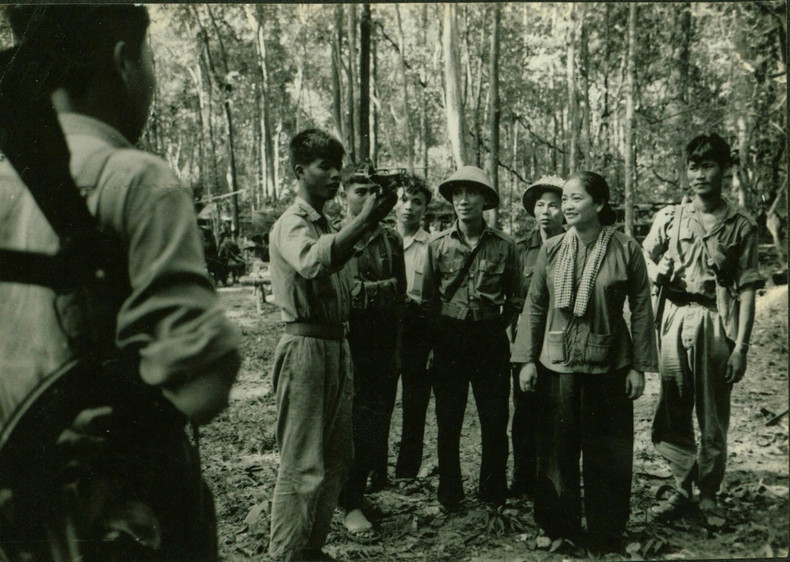 |
| Nguyen Thi Dinh instructs soldiers to review and learn from their experience in shooting down helicopters in Ap Bac, January 2, 1963. (File photo / Vietnam Women's Museum) |
The strategic genius of the talented military general Nguyen Thi Dinh was further demonstrated in her direct military leadership and revolutionary guidance in the South in her position as Deputy Commander-in-Chief of the Liberation Armed Forces of South Vietnam from 1965 to 1975.
She effectively led cultural and propaganda units, guerrilla forces, and mass organisations under the Central Office for South Vietnam, successfully defeating the US Junction City campaign targeting the Duong Minh Chau base (in Tay Ninh Province) in 1967.
She also led efforts to deploy female cadres to strategic hamlets, build grassroots networks, engage with religious followers, and conduct political operations to dismantle Cao Dai forces in Tay Ninh during the Tet Offensive in 1968.
One of her most notable contributions was her wise and strategic leadership and critical decisions to safeguard key bases and relocate the leadership headquarters of the Provisional Revolutionary Government within the Tay Ninh war zone in 1970.
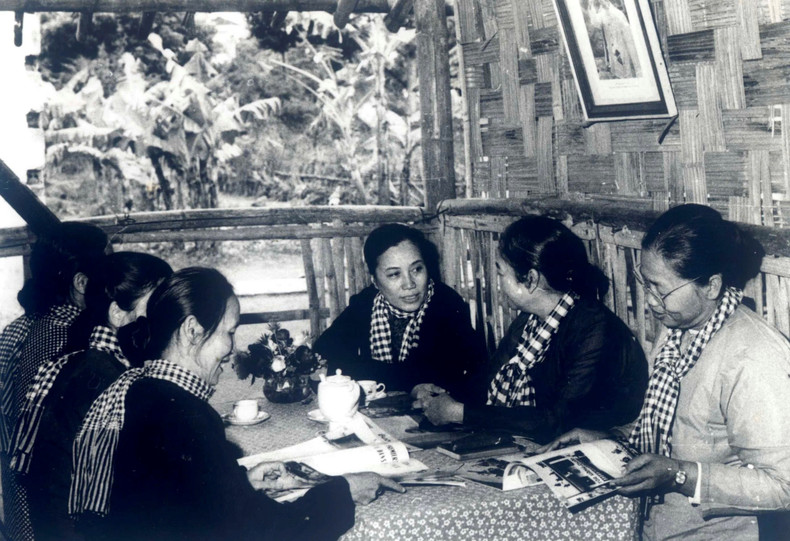 |
| Nguyen Thi Dinh talks with her comrades in the Southeastern war zone, in 1973. (File photo / Vietnam Women's Museum) |
She is also remembered as a caring commander who always kept a sewing kit to mend clothes for the soldiers during breaks. She often stayed up late and woke up early to personally guide her comrades in cooking. The image of the Deputy Commander-in-Chief as both a gentle mother and the eldest sister left a lasting impression on soldiers across the southern battlefields.
 |
| Nguyen Thi Dinh and a soldier take a rest during a march. (File photo / Vietnam Women's Museum) |
Speaking at a meeting marking the 20th anniversary of the Vietnam Women’s Union, President Ho Chi Minh proudly stated: “The Deputy Commander-in-Chief of the Southern Liberation Army is Nguyen Thi Dinh. In the whole world, only our country has such a female general. What a great honour for the South, and our entire nation.”
Founder of the Vietnamese Women’s Museum
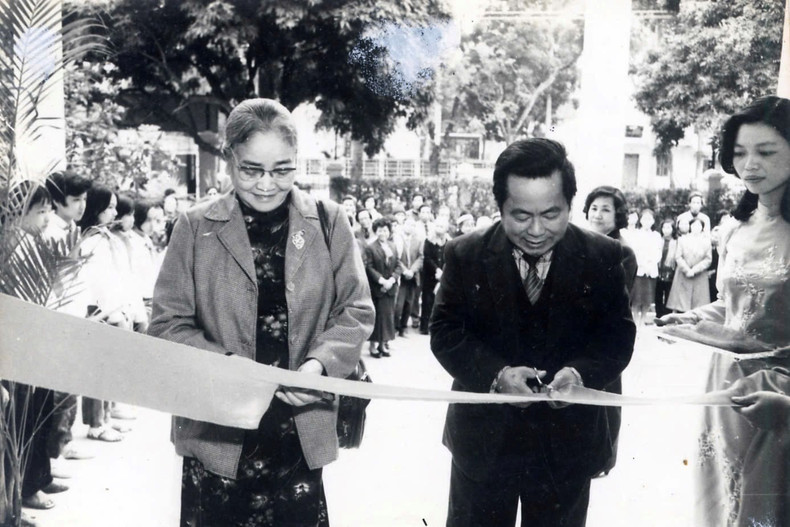 |
| Vice Chairwoman of the Council of Ministers and President of the Vietnam Women’s Union Nguyen Thi Dinh and Minister of Culture and Information Tran Van Phac, cut the ribbon for the opening of the exhibition entitled “President Ho Chi Minh with the cause of women's liberation” on March 8, 1990. (File photo / Vietnam Women's Museum) |
Having lived through two resistance wars for national independence, Nguyen Thi Dinh had witnessed countless sacrifices and tireless efforts made by generations of Vietnamese women. She once declared that a museum must be built to honour the contributions of heroic women who courageously gave their lives for the nation’s independence. She led the Vietnam Women’s Union in seeking approval for the museum’s establishment and calling on organisations and individuals to support its construction.
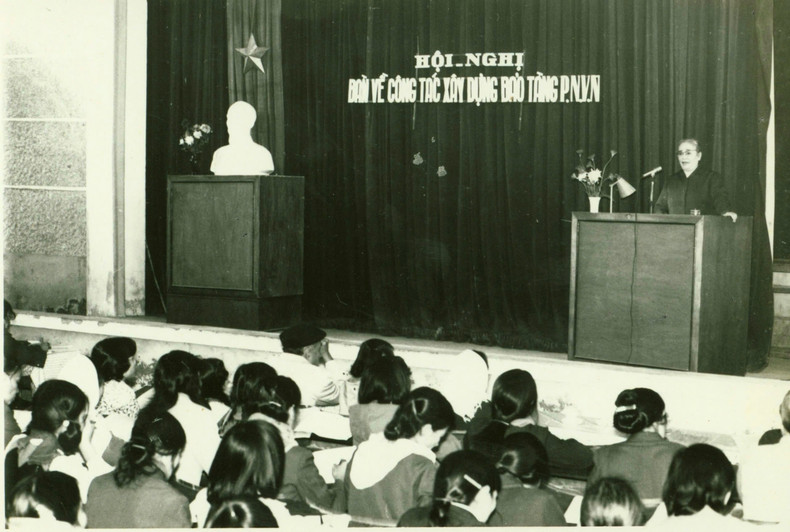 |
| Nguyen Thi Dinh delivers a directive speech at a conference on the construction of the Vietnam Women’s Museum in Hanoi from December 8 to 13, 1986. (File photo/Vietnamese Women’s Museum) |
She also initiated a grassroots campaign, encouraging each member of the Union nationwide to contribute one duck egg for the project. On every business trip, she carried a notebook in her bag to record donations received from benefactors and supporters for the Vietnamese Women’s Museum. She reviewed and approved the architectural design for the museum building. Even on August 26, 1992, the day she passed away from a heart attack, her notebook and the collected funds for the museum were still in her handbag.
 |
| Major General Nguyen Thi Dinh inspects the architectural model of the Vietnamese Women’s Museum at the Hanoi Department of Construction in 1991. (File photo/Vietnamese Women’s Museum) |
Following in her footsteps, successive generations of leaders and staff of the Vietnamese Women’s Museum have worked tirelessly to collect artefacts, curate exhibitions, and mobilise funds, culminating in the museum’s inauguration on October 20, 1995.
Constantly promoting innovation, the museum has earned widespread recognition. TripAdvisor, the world’s largest travel website, has twice ranked it among Hanoi’s most appealing destinations and among the Top 25 Museums in Asia. The Vietnam National Authority of Tourism and the Vietnam Tourism Association have also honoured it as one of the top tourist attractions in the country.
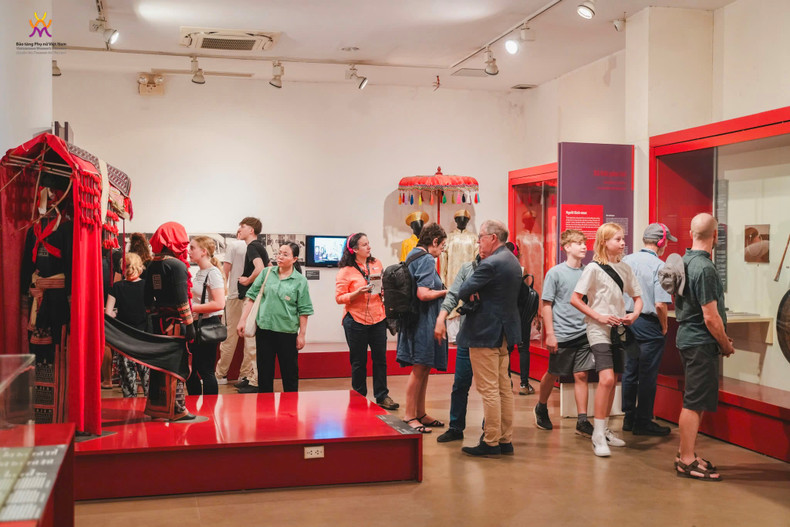 |
| Vietnamese Women’s Museum – an attractive cultural destination. (Photo: Vietnam Women’s Museum) |
Through relentless efforts and development over nearly four decades, the Vietnamese Women’s Museum has firmly established its place within the national and international museum community, leaving a lasting impression on the public.
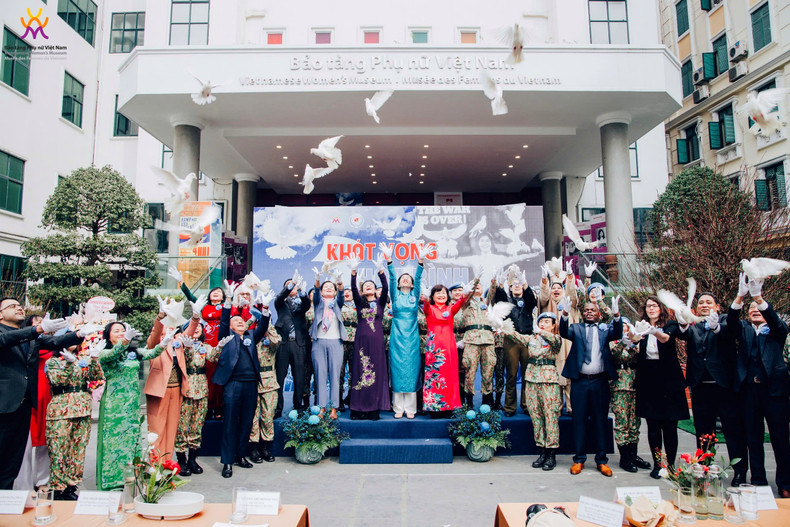 |
| The “Aspiration for Peace” programme held at the Vietnamese Women’s Museum on January 9, 2023. (Photo: Vietnamese Women’s Museum) |
Today, as groups of students and domestic and international visitors step into the museum, a meaningful cultural venue and a prominent destination in the heart of the capital, the images of and stories about Nguyen Thi Dinh, the female general who fought tirelessly to preserve and pass on revolutionary values to future generations, are remembered with great respect.
